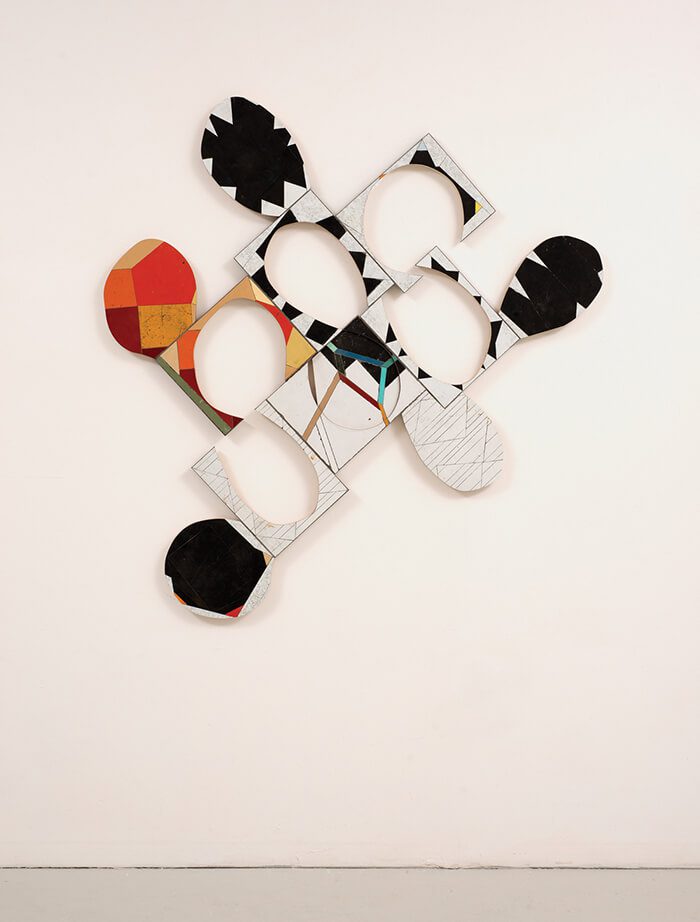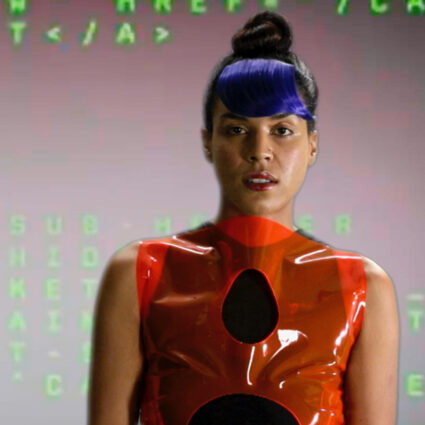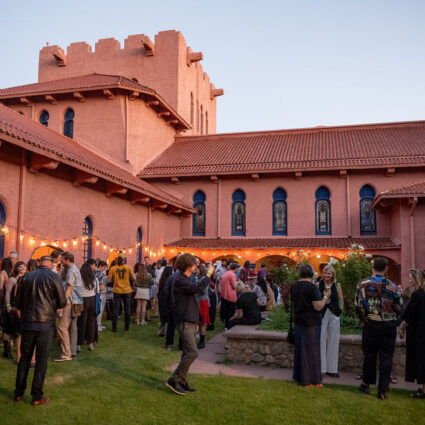
Nüart Gallery, Santa Fe
October 7-30, 2016
The classic model for the evolution of a sculptor (or of almost any artist, for that matter) is a series of comprehensible and logical steps leading to a fully realized “mature” style. So we have David Smith, for instance, progressing from the airy openness of his drawings in space from the early 1950s through the Tanktotems and “Voltri” series to the final heroic “Cubi” of his last years. Or Claes Oldenburg proceeding from his comically sloppy early Pop pieces toward an ever slicker but still sharply satiric monumentality.
But a number of contemporary artists are rejecting that longstanding paradigm, either to experiment in different mediums in the same period of time, or to explore several different dialects within a given language. Both courses of action make it harder for the critic: We can’t go from A to B to C but instead have to go from A to L and possibly back to C and then over into left field to see how the Cyrillic alphabet is doing. The absence of a clear progression makes it harder for the chronicler who wants to track some “growth” from show to show, but it also poses a new challenge for ways to think and write about art, and it will be interesting to see how historians of the future sort it all out.
Which brings us to Ted Larsen’s latest show at Nüart (October 7-30). In just the last year Larsen has been traveling down about six or seven different roads, proving himself adept at mastering different detours. Only two seem like dead ends, but even those have a certain interest.
Larsen’s basic materials for most of the sculptures at Nüart, which are generally on a small scale, include supports made of odd-sized marine-grade plywood to which he affixes sections of metal culled from old cars and trucks in salvage yards. If you have the pleasure of visiting his studio, he can identify the sources of these different elements—a school bus here, an ice-cream truck there, and maybe a pick-up over there. He leaves the scruffy patina of the original as is, so that the scratches and nicks are part of the works’ surface allure (the slick finish of newer vehicles doesn’t interest him).
But the knockout in this show, for me, was Round Corner, a loopy exploding relief of cut out lozenge shapes that was like Jean Arp on acid.
His most basic formula takes elementary shapes, such as the triangular boxes in the trio called “Approach-Angles” (best seen as a group), and affixes them to each other in such a way that they echo each other without exactly duplicating the one-on-one recipe. In another mash-up of shapes, such as Loosely Sealed, Larsen stacks blocky units in a wonky grid, often studded with nails (the title Steampunk De Stijl gives a clue to the art-historical forebears here). More complicated are the rectangular and rhomboidal shapes of works like Terribly Good, Dry Creek, or Almost Totally (as should be clear by now, Larsen favors a certain oxymoronic wink in his titles); the same approach sometimes incorporates unexpected and seductive hues like baby blue and sherbet-like pinks and oranges.
Another dialect within the Larsen lexicon is a curvy amalgam of off-white shapes that look like they could have originated in a pastry shop but maintain a stern Bauhaus austerity instead of party-cake gaiety. Still another situates linear frames on small bases. But the knockout in this show, for me, was Round Corner, a loopy exploding relief of cut out lozenge shapes that was like Jean Arp on acid.
The only directions that seem blind alleys to this reviewer are Alone Together, a tree-like armature supporting rectangular wooden planks, and Good Grief, also made largely of wood and incised with “drawings” in metal that suggested an elementary geometry lesson from another planet. But who knows? These could lead into entirely new territory.
It’s easy to see that the artist is riffing on any number of traditions—minimalism, geometric abstraction, even the auto-body aesthetics of John Chamberlain—but his beguiling and intimate approach embraces both cheeky homage and buoyantly original statements.



